Traditional Brazilian foods vary by region, but some dishes are considered iconic and can be found throughout the country. Here are some of the most typical dishes in every state.
Every state in the gluttonously blessed Brazil shines in its own way, influenced by its indigenous, African, Portuguese, and immigrant cultures. As the diversity might be slightly overwhelming for first-time visitors, it’s our duty to help you find the most delectable bite. It wasn’t an easy task, but after polling our network of local foodies with strong opinions about feijoada and other typical dishes, we’ve compiled a list of the single most popular food that you simply must eat in each state of Brazil. Bom apetite!
Acarajé — Bahia

Made from peeled beans formed into a ball and then deep-fried in dendê (palm oil), it’s stuffed with vatapá (a paste made from cornmeal), dried shrimp, and vinaigrette. Sensitive palates to spicy foods should answer “NO” to the question “com pimenta?” when asked by the local street vendors baianas in Salvador’s stalls. Try the best: Casa da Dinha, Largo de Santana, s/n — Salvador (BA)
Açaí — Amazonas

Açaí is a native super-fruit considered one of the bases of the diet, economy, and identity of the Amazon region, linked mainly to the culture of the states of Pará and Amazonas. In Manaus, the capital of Amazonas and the largest city in northern Brazil, there are plenty of restaurants and bars selling the freshest açaí in the country. Unlike popular recipes that add sweets to the fruit, in its native region açaí is also served as a sauce in accompaniment to savory foods. Go for it: Waku Sese, Manaus (AM)
Arroz com Pequi — Goiás and Tocantins
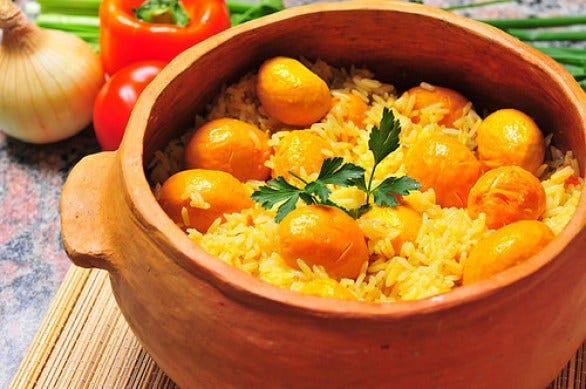
Pequi is a native fruit from Brazil’s central west and an important ingredient in the indigenous diet. In fact, it’s considered dangerous to eat because of the sharp spines on the inner seed but it becomes inoffensive when prepared with rice, onion, garlic, parsley, and pepper, resulting in a dish with intense color and remarkable flavor and aroma. It’s a good pair to chicken or beef stew. Order it here: Banana Menina, in Goiânia (GO)
Baião de Dois — Ceará

Baião de Dois is a complete dish, which means no accompaniment is needed. It’s made with rice and seasoned beans cooked together, mixed with pork rinds, cube-shaped cheese curds, coriander, and chives. The name “baião” derives from a typical Brazilian rhythm that became popular by Luiz Gonzaga, nationally known as “The King of Baião”. Try the best: Kina do Feijão, Fortaleza (CE)
Baixaria — Acre

This dish is served for breakfast or as a filling after-party food in the local street markets and restaurants. It combines simple ingredients such as cornmeal, fried eggs, ground beef, green onions, and tomato salad. Go for it: Mercado do Bosque, Rio Branco (AC)
Barreado — Paraná
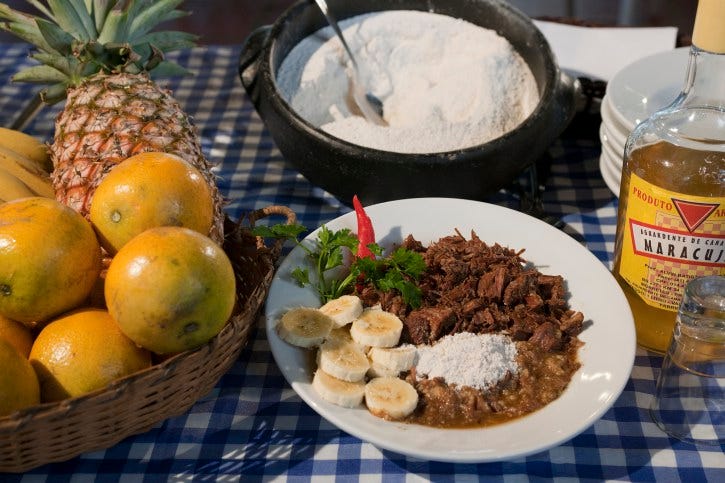
Influenced by Portuguese cuisine, the barreado is made of different types of lean beef cuts and pork loin, seasoned with onion, garlic, black pepper, bay leaf, and cumin, and cooked until it is chopped. Then it is mixed with cassava flour until it gets a gummy consistency and served with rice and sliced banana. Adopted as a dish for the days that precede Brazil’s Carnival, it doesn’t lose the original flavor when reheated, which freed people from cooking during this wild multi-day celebration. Where locals eat: Villa Morretes, in Morretes (PR)
Caldo de Piranha — Mato Grosso and Mato Grosso do Sul
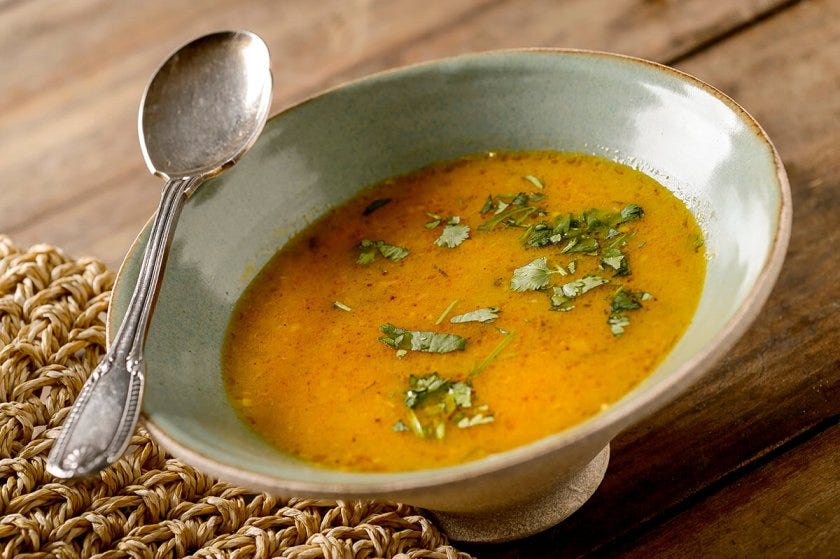
It’s a typical dish from Pantanal, the world’s largest tropical wetland and home to an array of wild species, including piranha, a ferocious carnivorous fish. It’s the main ingredient of the caldo de piranha, a soup served with a side of bread before the main course of a meal. It has a reputation for being a powerful aphrodisiac. Where to eat: Casa do João, Bonito (MS). Peixaria Okada, Cuiabá (MT)
Caldo de Sururu — Alagoas and Sergipe
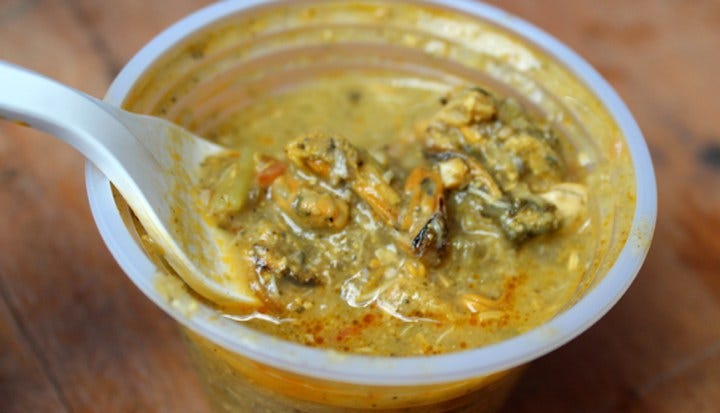
Sururu, Brazil’s charru mussel, is a bivalve mollusk similar to clams and oysters. In Alagoas, it’s found in the mud of lagoons and is considered a staple in restaurants, bars, and street markets both in Alagoas and Sergipe. It’s served as an appetizer, cooked with coconut milk and fish sauce, or prepared in the shell. Delicious and filling, it’s reputed to have therapeutic effects in regards to hangovers, and enhancing effects for male potency. Go for it: Akuaba, in Maceió (AL). República dos Camarões in Aracajú (SE)
Carne de Sol — Maranhão
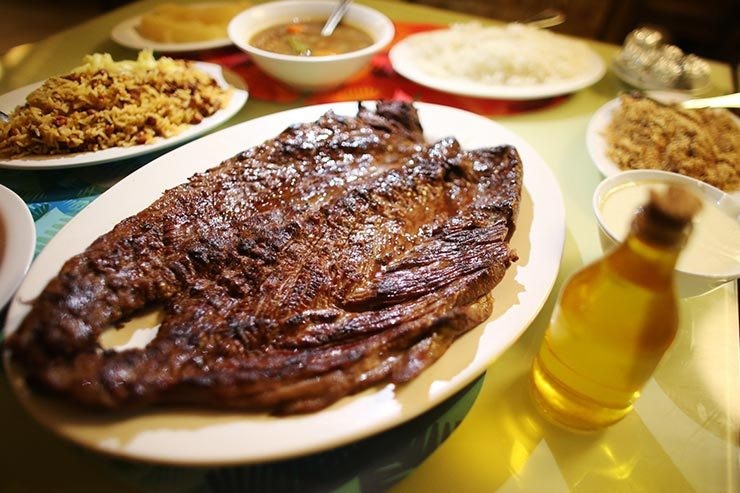
A feast of carne de sol (sun-dried beef in direct translation) includes green beans, fried cassava, farofa (toasted cassava flour), and vinaigrette. But do not get fooled by the name: the salted beef rests previously in the refrigerator or in a cold room, not in the sunlight, which would make it harder and dehydrated, giving rise to another national staple, carne-seca (dry-aged beef). Extracted from the topside or outside flat, the beef cut is served grilled or fried in butter. Where locals eat: Cabana do Sol, in São Luís (MA)
Churrasco — Rio Grande do Sul
There is no barbecue like the one made in Rio Grande do Sul — at least according to the gaúchos. The more traditionalists reject the rotisserie style (that became popular in Brazilian steakhouses abroad) and twist their noses at the salad bar. For them, farofa (toasted cassava flour) is the best side dish for an authentic churrasco. They also have no interest in filet mignon; preferences are ribs and picanha (sirloin cap). To eat like a local in Porto Alegre, or in any other city in the state of Rio Grande do Sul, head to a churrascaria and order a la carte a portion of beef, pork, lamb, or chicken, seasoned only with coarse salt. It’s heaven to carnivores. Go for it: Komka, Porto Alegre, (RS)
Coxinha — São Paulo
Coxinha is a street food snack largely consumed all over Brazil but in São Paulo, the state which claims its creation, it has a special place on the local’s diet. Savory dough shaped into a drumstick around a creamy chicken salad, breaded and fried, it’s easy to eat on the go and in its regular size and shape (similar to a pear), is a meal on its own. Go for the best: Frangó, São Paulo (SP)
Damurida — Roraima

Damurida is an indigenous stew recipe made with beef, chicken, or roasted fish with a variation of local chili peppers, tapioca gum, and tucupi (manioc root’s juice). Due to its intense spicy flavor, don’t just pop a bunch into your mouth unless you are brave or will absolutely love the rush of hotness that will stream out of your nostrils. Where to eat: Damurida Gourmet, Boa Vista (RO)
Feijoada — Rio de Janeiro
Present in menus all over the country, it lives up to the title of Brazil’s national dish. Although there are many versions of the recipe, the one served in the city of Rio de Janeiro, where the first record of the term “feijoada” appeared, is considered the most authentic. In a pan with boiled black beans, carne seca (a salted, dried beef similar to jerky), sausage, ribs, foot, ear, and pork tail are added, giving the stew a tasty and consistent broth. It’s served with rice, kale, and orange garnish, which adds a nice hit of brightness to the long-simmered dish. No matter, if you go to Rio or to any other city, visiting Brazil and not trying feijoada, is like going to Italy and not eating any pasta. Go for it: Casa da Feijoada, in Ipanema (RJ)
Moqueca Capixaba — Espírito Santo
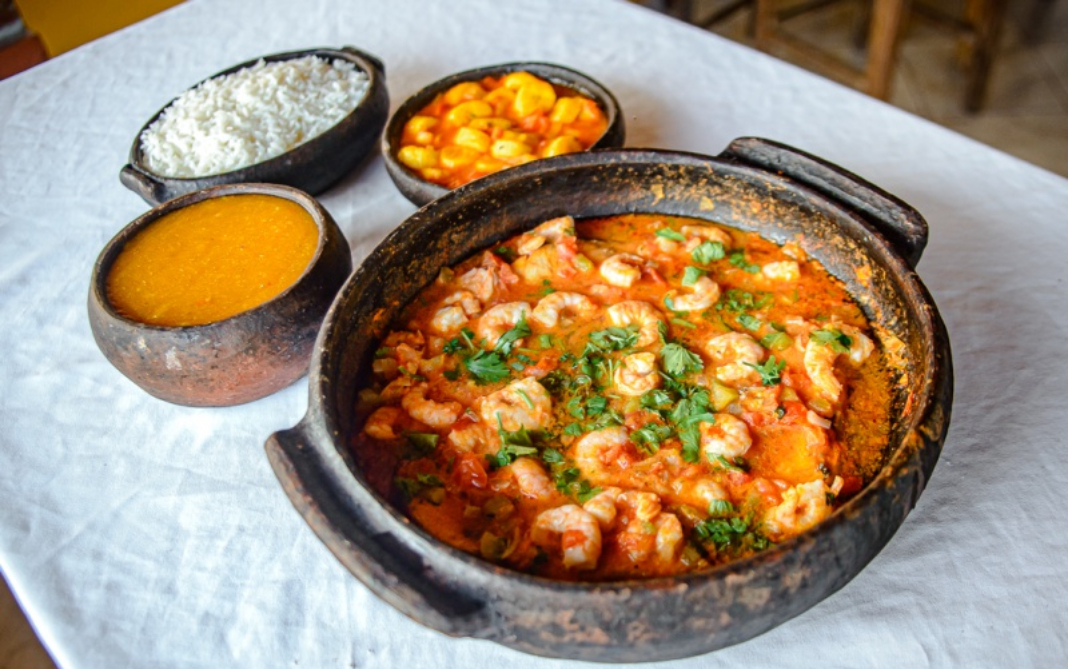
There are two versions of moqueca in Brazil: the one from Bahia, rich and almost currylike with coconut milk and palm oil. From Espírito Santo, a lighter version is made in a clay pot with a fish fillet cooked in tomato sauce, coriander, onion, chives, olive oil, and annatto. Prawns and other seafood may also be added. It’s accompanied by pirão (manioc flour cooked in fish sauce), mashed plantain, and rice.
Where to eat: Pirão, in Vitória (ES)
Mungunzá — Paraíba
Home of the largest São João, a popular festival that takes place in June nationwide, the capital of Paraíba, João Pessoa, serves many of its typical foods the whole year. Made with hominy, a grain similar to white dried corn kernels, mungunzá (also known as canjica) is served as a dessert and combines sweetened condensed milk, whole milk, coconut milk, and unsweetened shredded coconut. Cinnamon and cloves are the star spices of this dish. It can also be found in savory variations. Go for it: Padaria Bonfim, João Pessoa (PB)
Ostras — Santa Catarina
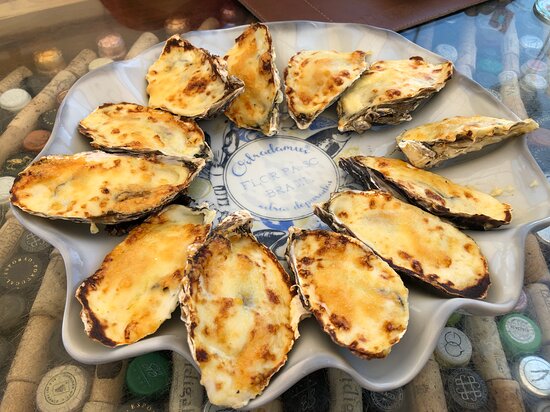
In the waters of Santa Catarina’s capital, Florianópolis, ostras (oysters) find the ideal conditions to grow. The canal between the island and the mainland receives a constant flow of marine nutrients under mild temperatures, and the mollusks are ready for consumption in only eight months — in other regions, the complete cycle can reach four years. Therefore, Florianópolis is the largest producer of the delicacy in the country. Head to the neighborhood of Ribeirão da Ilha to the freshest ones served baked, gratin-form, or, the most popular, in natura. Try the best: Ostradamus, in Florianópolis (SC)
Paçoca — Rio Grande do Norte
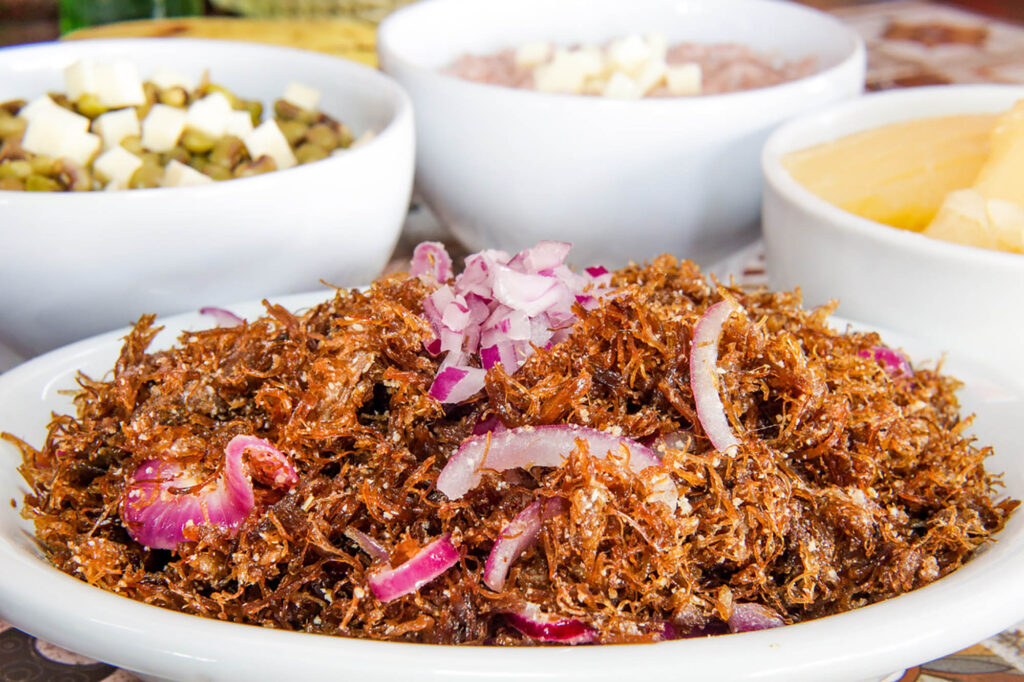
Paçoca, in most of the country, is known as a candy made with peanuts but in Rio Grande do Norte it’s the name of a typical recipe made with dried beef bruised with a pestle and mortar, mixed with toasted cassava flour and seasoned with onion, garlic, and spices. It’s eaten with rice and black-eyed beans.
Where locals eat: Paçoca de Pilão, Parnamirim, (RN)
Pão de Queijo, Minas Gerais
While pão de queijo (cheese bread) is served throughout Latin America, it’s Minas Gerais — Brazil’s state with a robust dairy industry — who gets the credit for refining the recipe and making it one of the most popular savories in the country. The slightly sour mini bread buns with cracked, crunchy, toasted cheese exteriors, and soft, spongy interiors, is made from a mix of water, oil or butter, salt, milk, cheese, and eggs. Sour tapioca flour is the secret to the bread’s slightly tart quality with no gluten.
Go for it: A Pão de Queijaria, Belo Horizonte (MG)
Tapioca — Pernambuco
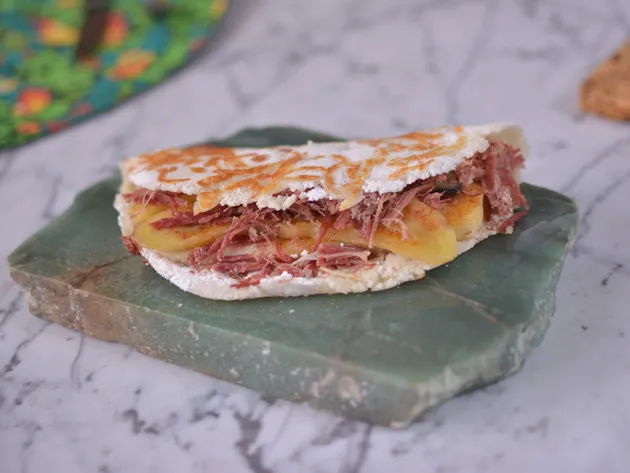
Tapioca (which does not have any resemblance with the tapioca as consumed in the US) is pretty popular in different parts of Brazil, but it is in Pernambuco that the cassava flour made as a crepe gains its highest popularity. The typical local recipe is cooked in a skillet in a half-moon shape, filled with cheese curd and grated coconut. Variations are also made with sweet ingredients such as condensed milk. Where to order: Tapioca Rendada do Damião, various locations (PE)
Tucupi – Pará and Amapá
The main ingredient in the cuisine of Amazônia, tucupi is made from manioc’s root juice, which needs to be boiled long enough to lose the poisonous hydrocyanic acid. In the last stage, it’s added with chicory, basil and salt. It’s the balance between these seasonings and the boiling time that raises the fundamental sauce used in the pato no tucupi, a delicious regional recipe made with duck. Tucupi is also present in the tacacá, a combination of manioc gum, dry shrimp, chili, and an Amazonian herb named jambu.
Go for it: Remanso do Bosque, in Belém (PA) and Delícias do Pará, in Macapá (AP)
Questions about Brazilian cuisine
What are the most popular Brazilian dishes?

This includes iconic dishes such as Feijoada (a black bean stew with pork), Pão de Queijo (cheese bread), Brigadeiro (a chocolate truffle), Coxinha (fried dough filled with chicken), and Churrasco (Brazilian barbecue).
What ingredients are commonly used in Brazilian cuisine?
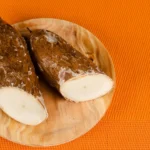
Common ingredients include black beans, rice, cassava (yucca), corn, tropical fruits (like açaí, passion fruit, and guava), and meats (especially beef and pork).
What is Feijoada and how is it traditionally served?
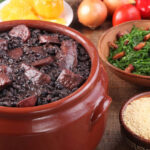
Feijoada is a rich, hearty black bean stew with various cuts of pork and sometimes beef. It is traditionally served with rice, collard greens, farofa (toasted cassava flour), and orange slices.
What is a typical Brazilian breakfast?

A typical Brazilian breakfast often includes coffee with milk, fresh bread rolls (pão francês), butter, cheese, ham, tropical fruits, and sometimes Pão de Queijo.
What are some popular Brazilian desserts?

Popular desserts include Brigadeiro, Beijinho (a coconut truffle), Quindim (a coconut custard), Pudim (caramel flan), and Açaí na Tigela (açaí bowl).
What are Brazilian street foods like?

Brazilian street foods include items like Coxinha, Pastel (deep-fried pastry with various fillings), Acarajé (deep-fried ball made from black-eyed peas and filled with shrimp), and Espetinho (skewered grilled meats).
What regional variations exist in Brazilian cuisine?
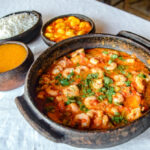
Brazilian cuisine varies significantly by region. For instance, the cuisine of the Northeast (Nordeste) includes dishes with African influences such as Vatapá and Moqueca, while the South (Sul) is known for its churrasco (barbecue). The North (Norte) features Amazonian ingredients like tucupi (a yellow sauce made from cassava) and jambu (an herb).
What drinks are popular in Brazil?

Popular drinks include Caipirinha (the national cocktail made with cachaça, sugar, and lime), Guaraná (a soft drink), coconut water, coffee, and regional fruit juices like cupuaçu and graviola




